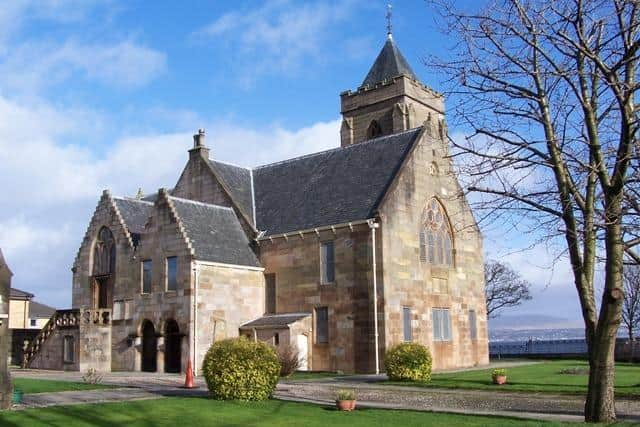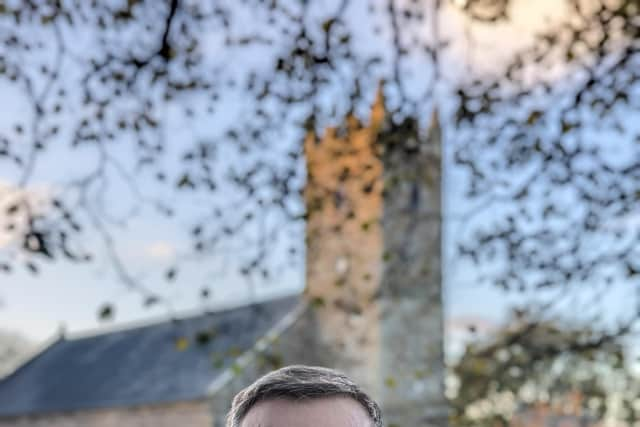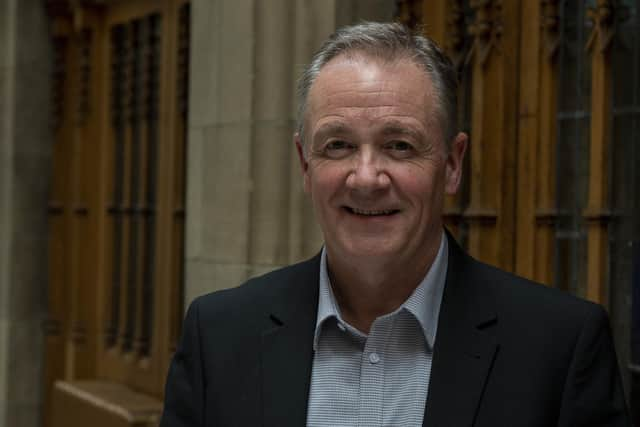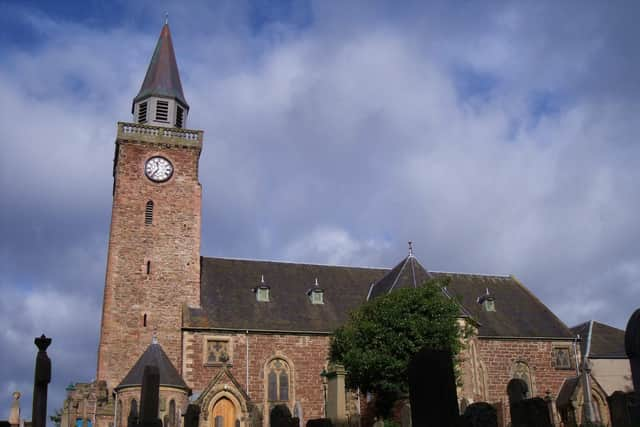Exclusive:Church closures Scotland: ‘Existential crisis’ as up to 700 churches predicted to close across Scotland by end of decade
As many as 700 churches across Scotland could close by the end of this decade, according to a charity that preserves and protects the nation’s storied ecclesiastical built heritage, amid growing fears the most radical restructuring of the nation’s largest denomination in nearly a century could see worshippers stay away from places of worship altogether.
Scotland’s Churches Trust (SCT) said the rate of church closures in villages, towns and cities around the country has rapidly accelerated in the wake of the pandemic, leaving many congregations gripped by feelings of denial, sadness and anger as they face losing places of worship that have been integral to the lives of their families and communities for centuries.
Advertisement
Hide AdAdvertisement
Hide AdThe charity stressed the full impact of the ongoing spate of closures had yet to be felt, with the closure of the buildings not only affecting those of faith, but wider civic society, particularly among community groups that rely on them for day to day use at a time when rental fees of private and local authority venues are rising.
The vast majority of the closures are taking place across the Church of Scotland’s built estate, where a newly streamlined cluster of presbyteries has been tasked with formulating mission plans to determine which of their churches are surplus to requirements. The initiative is central to wider efforts to ensure the Kirk is “lean and fit” for mission in the 21st century in the face of dwindling congregations.
The church counted around 283,600 members last year – a fraction of the 1.3 million-strong membership seen in the late 1950s. Even out of that diminished membership, most people do not attend worship on a Sunday. Before the pandemic, the number who did so stood at around 88,000, but it has since fallen to about 60,000, with close to half of its members choosing to worship online instead.
Dr DJ Johnston-Smith, director of SCT, said he anticipated the mission plan drive would result in the loss of several hundred of the Kirk’s churches by the end of 2025. He predicted that future efficiency drives would see many more closing their doors for good by 2030.
“We estimate that between 350 and 400 buildings will close over the next few years,” he said. “That’s what we can extract from presbytery plans that have been published or that have been leaked to us. But as well as that, we expect a similar number will close by the end of the decade. So across all denominations, we’re looking at 700 churches closing by 2030. That’s a massive change for the country.


“In terms of all religious buildings, on paper there are currently around 2,800 to 3,000 of all faiths and creeds across the country. By 2030, there may only be around 1,500.
"For those people who are not of faith, that’s maybe not important, but they are places of escape, they are places of sanctuary and relief.
"They’re used by Alcoholics Anonymous and recovering drug addicts, they’re used by Scouts and Brownies, and playgroups who can’t afford the cost of local authority venues. All these things that go with a church building will no longer be available in a generation’s time.”
Advertisement
Hide AdAdvertisement
Hide AdThe property listings on the Church of Scotland’s website betrays the extent of the disposals already taking place.


Last week, some 56 properties were advertised for sale. Some 23 were church buildings, but the total included manses, halls, plots of land and residential properties. Last year, the church approved 83 property sales, bringing in more than £13.8 million.
Those properties on the market include several churches with notable national histories, such as the A-listed Old High Church in Inverness, where Jacobite prisoners were executed in the churchyard in the aftermath of the Battle of Culloden.
Also listed is the St Columba Gaelic Church in the heart of Glasgow city centre, a spectacular A-listed Gothic style building known as the ‘Highland Cathedral’.
While the Kirk’s recently reorganised presbyteries were asked to finalise their mission plans by the end of last year, work to ratify the closures remains ongoing.


Rev David Cameron, a parish minister in Kilmarnock and convener of the Assembly Trustees, presented a report to the General Assembly earlier this year detailing the need for change. But he stressed the closures were emotional for all involved as the church reckoned with a restructuring that has been looming large for 50 years.
“Lament is a word we use in the church, and we have lamented a lot over the past few years as we’ve started to go through this process,” he told The Scotsman.
“We understand fully the emotions that come with the situation our national church finds itself in. These range from anger, guilt, sorrow and failure.
Advertisement
Hide AdAdvertisement
Hide Ad"There will also be relief that the burden of trying to keep a place of worship open with few people and little, if any, contribution from other community sources has finally been lifted.
“Closure of much-loved places of worship is a grief Church of Scotland ministers, elders, members and staff all bear. However, we do believe radical reform is necessary if we are to address the challenges of falling minister numbers, a decline in membership and a reduction in income both nationally and locally”.
Rev Cameron stressed there was no overall national “target” for church closures, and the Kirk was determined to work with other groups to find a future for as many as possible.


Some innovative solutions have already been brokered, such as the medieval Church of the Holy Rude in Stirling, where James VI was crowned and Mary Queen of Scots once worshipped. It has teamed up with a local charity to bolster its tourist offering and ensure its rich history resonates for years to come.
But it is very much the exception across presbyteries facing sweeping cuts as they assess buildings in line with a nationally set criteria. It includes taking into account whether a structure is wind and watertight, safe, secure, and accessible, and significantly, whether its maintenance and repair costs are realistic and sustainable.
As a result, many churches have failed to make the grade.
The mission plan proposals already published give sight of the scale of the closures being put forward. Edinburgh and West Lothian Presbytery’s working document has classified some 32 of its buildings as ‘B’, putting them at risk of closure. The Presbytery of Aberdeen and Shetland has proposed closing ten of its 27 church buildings.
Similarly radical proposals in the newly formed Presbytery of Forth Valley and Clydesdale, which include the dissolution of several congregations, have been deferred after encountering resistance.
In Clyde Presbytery, for example, at least 17, and as many as 21, buildings have been earmarked for closure. Several span some of Scotland’s most deprived areas, such as pockets of Greenock and Dumbarton.
Advertisement
Hide AdAdvertisement
Hide AdRev Ann McCool, the minister of one church, Johnstone High Parish, that is facing the cut in Clyde, has described the move as “absolute stupidity”, pointing out that it is not only used by more than 100 people at church services every week, but groups such as the Boys and Girls’ Brigade.
Lynnette Robertson, from Greenock, is a former member of the congregation at the town’s Old West Kirk, a historic place of worship that was the first Presbyterian church built in Scotland following the Reformation. It was sold last year to a restaurateur, a decision Ms Robertson said had left people “devastated”.
She said: “The new owner has promised to engage with the community about the use of the building. There’s still a great sense of uncertainty. We didn’t think the decision to sell off the building was fair.
"The sense at the time was that even though the sale wasn’t illegal, it was immoral.
“This is my fifth church. The one I was christened in is going to be demolished, the one I got married in is already demolished, and another one is now a Carpet Warehouse. It’s very hard, it can feel like the break up of a family.”
Dr Johnston-Smith said the church was facing an “existential crisis” amid the closures, and the widespread reorganisation of its structure was being solely felt by parishioners across Scotland, with part of his job akin to that of a grief counsellor.
“There’s a level of disharmony among congregations all across the country, and sadly, many of them are in denial that this would happen to them,” he said.
“Many still don’t believe that closure will come even if their church has been categorised as ‘B’ and the presbytery plan has been formally accepted. There’s sadness, unhappiness and anger at the lack of place attachment in the church’s current theology.
Advertisement
Hide AdAdvertisement
Hide Ad“There are people leaving the church around the country. They are either going to a different denomination altogether, or they’re just not going to church at all. That’s not just members of congregations, it’s members of Kirk sessions who are leaving.”
Rev Cameron, however, stressed the difficult decisions being taken now were in service of the church’s future. He expressed optimism that a period of pain will be followed by healing and, in time, renewal.
“The life of a church itself can only be measured in terms of worship, fellowship, and our ability to introduce people to Christ,” he said.
“Going forward, we want to support fresh expressions of mission in communities, but it takes people in order to help us flourish. We need to reform and evolve as part of this ongoing process, and I’m really hopeful we can achieve that.”
Comments
Want to join the conversation? Please or to comment on this article.